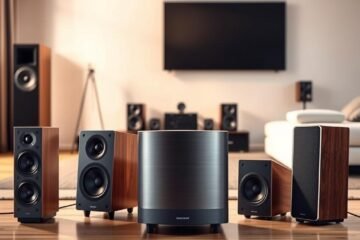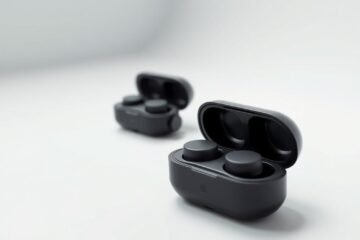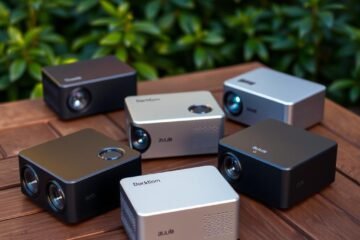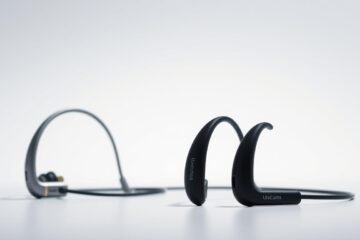Nearly 60% of modern helmets now come with audio or Bluetooth features. This change has made helmets more than just protective gear. They are now connected safety devices.
You’re reading this guide because smart helmet tech is now common. In 2025, helmets with Bluetooth are the norm for riders and skiers. They offer navigation, group chats, and music without needing to use phones.
Our team at wBW has reviewed over 450 helmets and tested more than 2,500 pieces of gear. We’ve found the best smart motorcycle and ski helmets with Bluetooth. Our picks focus on safety, performance, and value.
This article covers everything from helmet certification and fit to practical comparisons. We look at top rated Bluetooth motorcycle helmets and ski models. We also focus on their battery life in cold weather.
Key Takeaways
- Smart helmet technology now combines audio, mesh intercom, and crash-detection features in many top models.
- Prioritize fit and certification (DOT, ECE 22.06, NTA-8776) before advanced features.
- For group rides, mesh systems beat single-pair Bluetooth for range and stability.
- Cold-weather models need batteries and speaker placement tuned for low temperatures.
- Our recommendations balance safety, long-term durability, and real-world audio performance.
Introduction to best smart motorcycle and ski helmets with Bluetooth.
Today, you need gear that keeps up with your lifestyle. This guide compares smart audio, crash detection, and lights from brands like Sena, Shoei, POC, LIVALL, and Unit 1. Our team tests gear hands-on, scoring helmets for safety, fit, and real-world use. This helps you choose the right gear for your ride or slope.
Editor’s Picks 2025
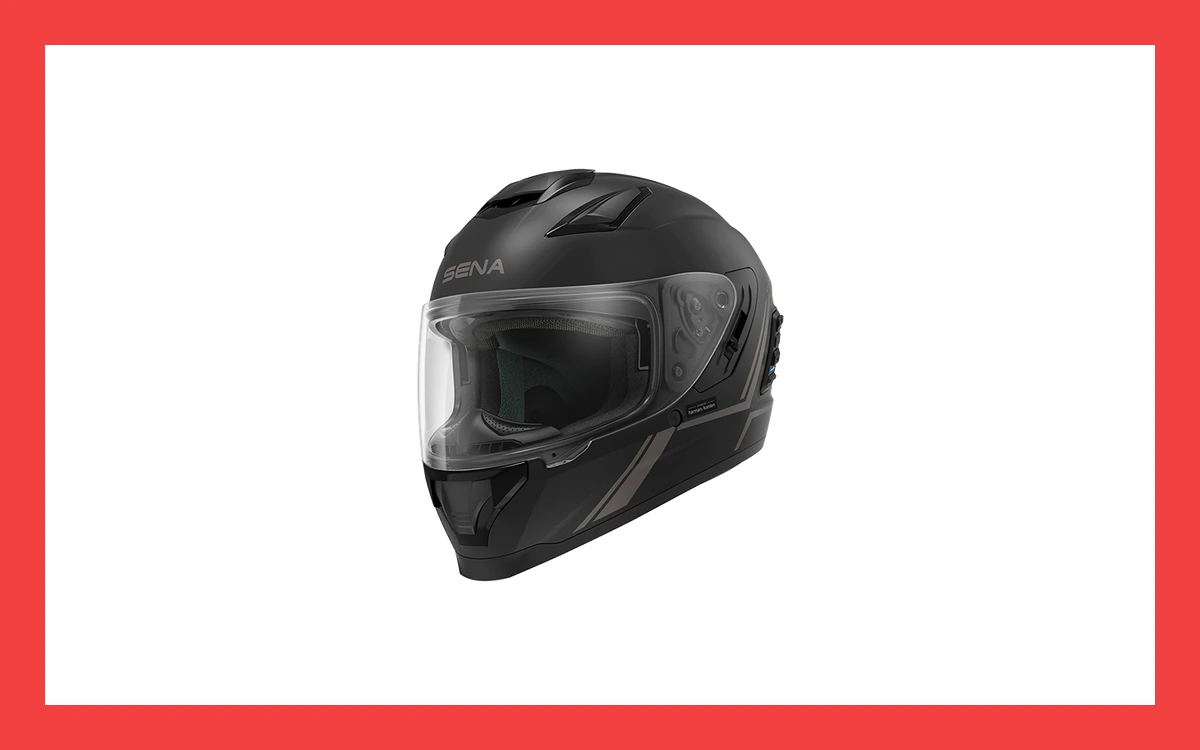
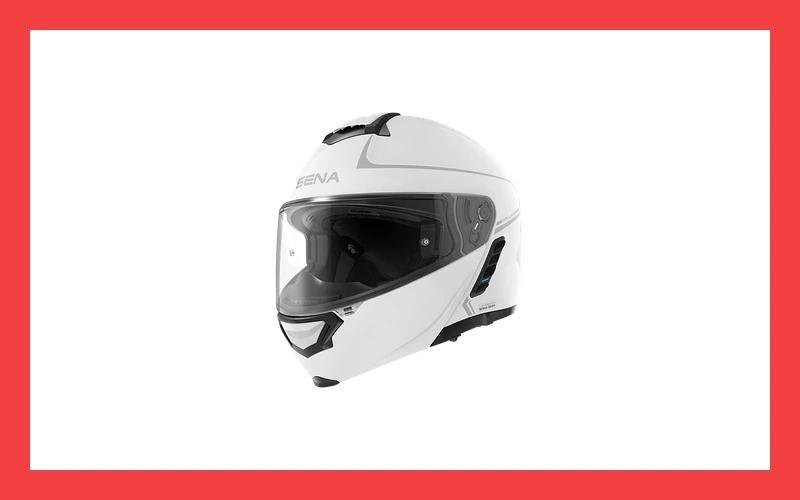
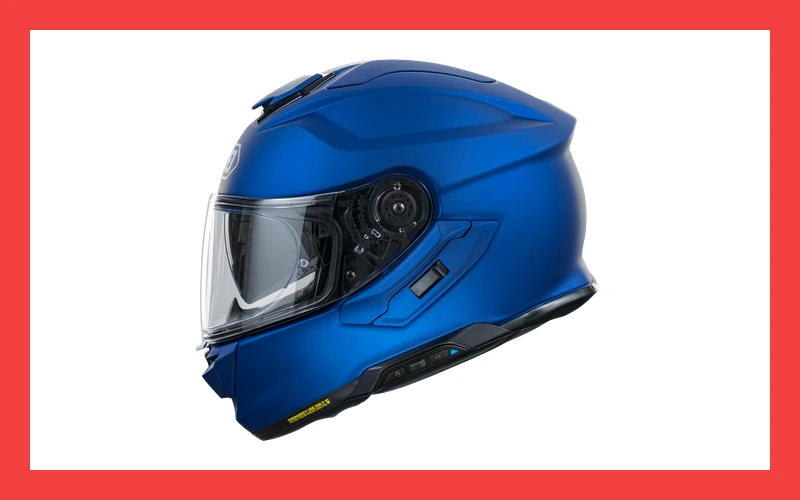
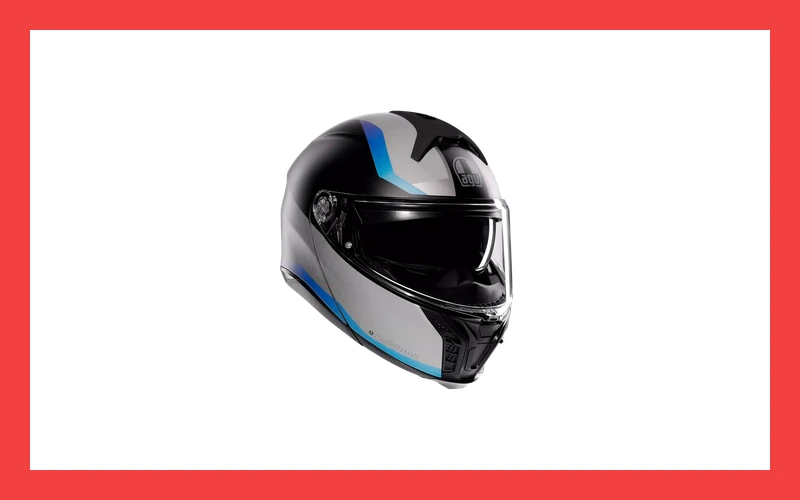
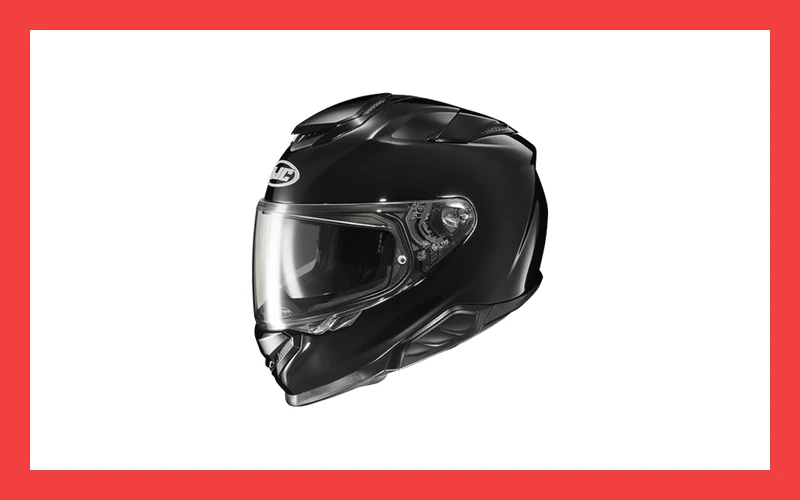
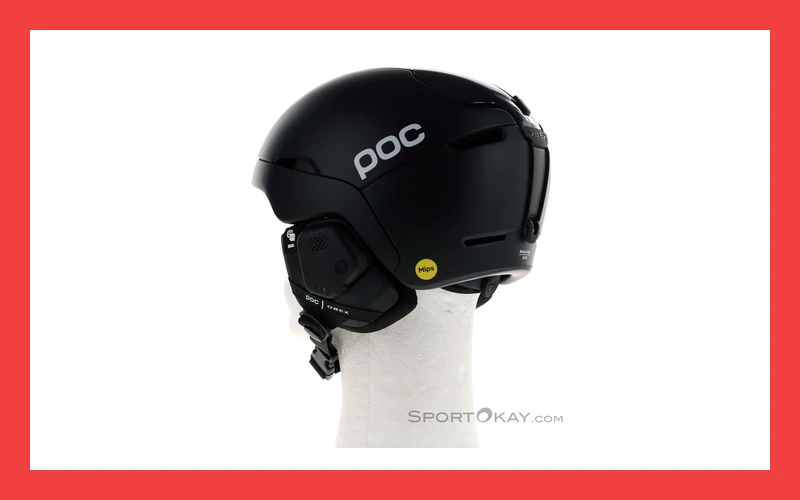
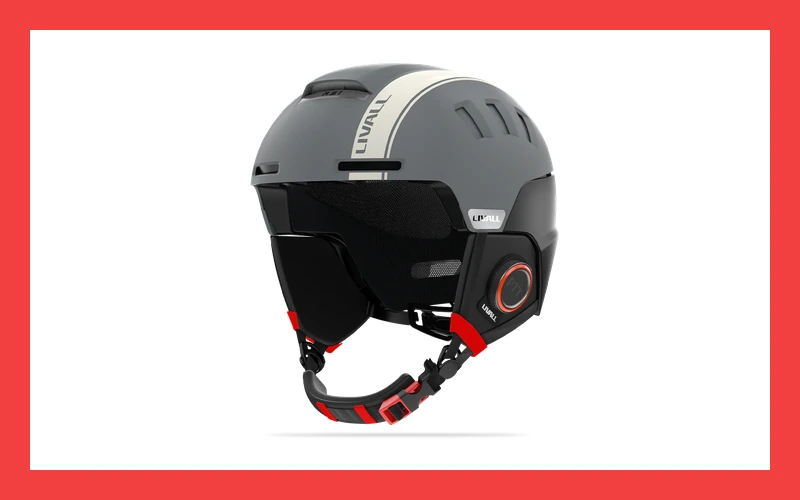
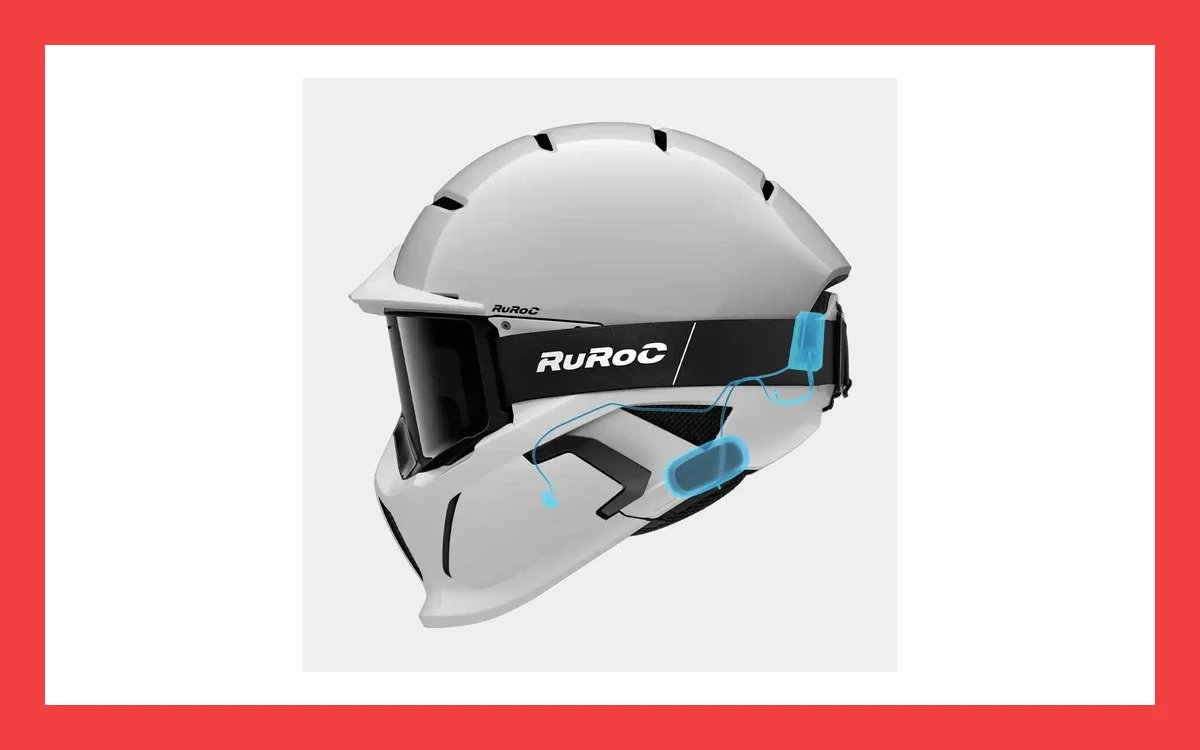
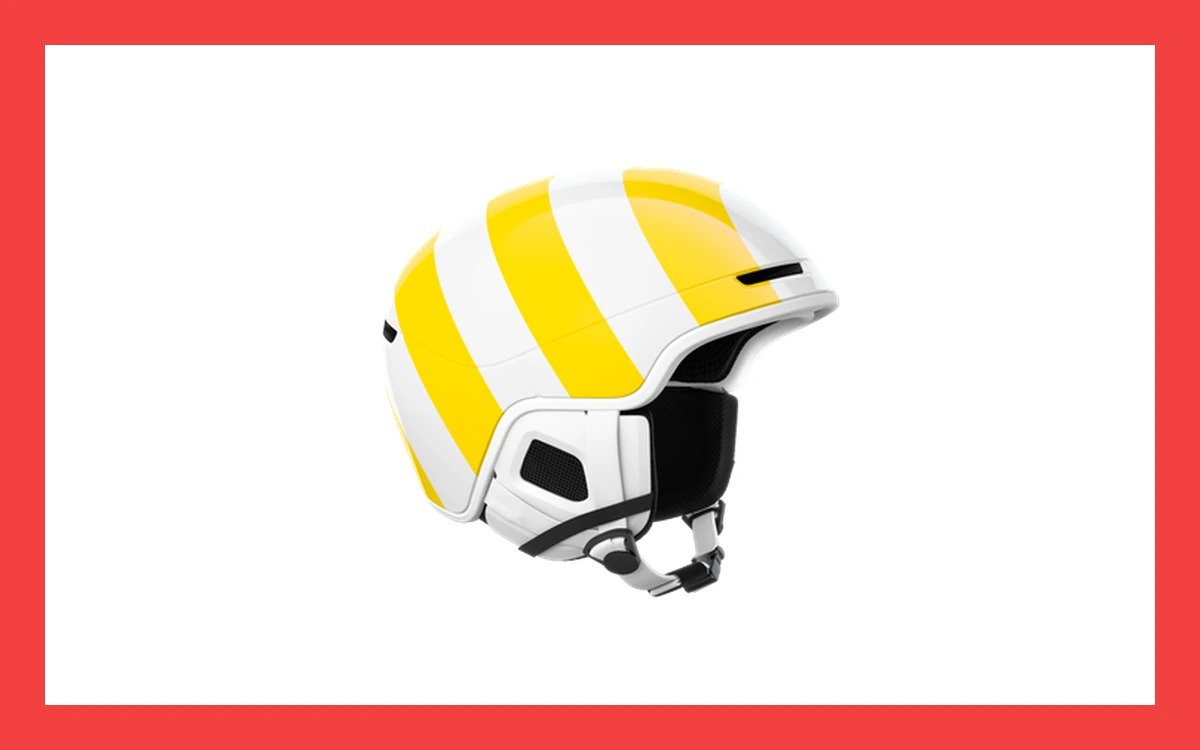
Comparison — Smart Motorcycle Helmets
| Model | Cert | Weight | Comms Type | Battery (claimed) | Notable Features | Best For |
|---|---|---|---|---|---|---|
| Sena Stryker (full-face) | DOT | ~1,750 g (M) | Mesh 2.0 + Bluetooth | Mesh ~10–11 h; BT ~18 h | Harman Kardon speakers/mic; LED tail-light; magnetic pogo | All-round smart full-face |
| Sena Impulse (modular) | DOT | ~1,760 g (M) | Mesh 2.0 + Bluetooth | Mesh ~10–11 h; BT ~18 h | Harman Kardon audio; magnetic pogo; auto Wi-Fi firmware | Touring & commuters |
| Shoei GT-Air 3 + SRL3 | DOT; ECE 22.06 | ~1,775 g (~3.9 lb) | SRL3 Mesh + Bluetooth | Headset-dependent (SRL3) | Quiet aero; Pinlock; flush recess keeps profile sleek | Quiet highway touring |
| AGV Tourmodular + INSYDE | ECE 22.06 | ~1.7 kg | Cardo DMC Mesh + BT | Headset-dependent (INSYDE) | DMC for up to 15 riders; modular convenience | Group touring (UK/DE focus) |
| HJC RPHA 71 + SMART HJC 50B | ECE 22.06 | ~1,567 g* | Mesh 2.0 + Bluetooth | BT up to ~13 h (typ.); Mesh lower | Factory integration ports; 50B co-dev with Sena | Value sport-touring |
| Ruroc ATLAS 4.0 + Shockwave | ECE 22.06* | ~1.5 kg (variant-dep.) | Bluetooth (Shockwave module) | Headset-dependent (Shockwave) | Low-profile plug-in audio; sleek shell & ecosystem styling | Style / easy audio upgrade |
Comparison — Smart Ski / Snow Helmets
| Model | Cert | Weight | Comms Type | Battery (claimed) | Notable Features | Best For |
|---|---|---|---|---|---|---|
| POC Obex MIPS Communication | EN 1077-B | ~1 lb 5 oz (M/L) | Bluetooth (integrated) | Not stated | Integrated speakers/mic (POC Aid); dial fit; vent sliders | All-mountain with built-in audio |
| POC Obex Pure (Comm-compatible) | EN 1077-B | Lightweight | Add-on POC Aid / Connect | Headset-dependent | Seamless fit with POC goggles; upgrade path to audio | Budget/stock flexibility (US/UK/EU) |
| LIVALL RS1 Smart Ski Helmet | EN 1077; ASTM F2040 | ~750 g | Bluetooth (integrated) | Up to 16 h; to −20 °C | Wind-resistant mic; vents; app features | Cold-weather resort days |
Prices — US / UK / EU
| Model | US (USD) | UK (GBP) | EU (EUR) | Notes |
|---|---|---|---|---|
| Sena Stryker | $324–$499 | £398–£492 | €— | Integrated Mesh+BT; sales vary by color/size |
| Sena Impulse | $599 (Sena) | £379–£629 | €— | Modular; Wi-Fi firmware updates while charging |
| Shoei GT-Air 3 + SRL3 | Helmet $779.99 + SRL3 $359 | £— | €— | Flush-fit comms unit priced separately |
| AGV Tourmodular + INSYDE | Helmet $769 + INSYDE $362 (AGV US) | £— | €494–€539 +€225–€345 | DMC Mesh kit often sold separately/bundled |
| HJC RPHA 71 + SMART HJC 50B | Helme $569.99+ 50B $349.99 | £399 | Near-flush integration; 50B is a separate module | |
| Ruroc ATLAS 4.0 + Shockwave | Helmet $379 + Shockwave $200 | £375 | €— | “From” price varies by graphic |
| POC Obex MIPS Communication | $150–$300 | £— | €— | Integrated speakers/mic (Bluetooth) |
| POC Obex Pure (Comm-compatible) | $120–$170 | £— | €— | Works with POC Aid headset; seamless with POC goggles |
| LIVALL RS1 | $179 | £— | €— | Low-temp battery claims; integrated Bluetooth |
Why this guide matters in 2025
Urban micromobility, eBikes, and high-speed touring have changed what riders need. You now face more mixed-use traffic and rules like NTA-8776 for speed eBikes. Modern helmets often have integrated crash detection, SOS, and turn-signal lighting.
Top brands have moved to Mesh 2.0/3.0 and Bluetooth 5.x. This means fewer add-ons and longer battery life. Knowing which helmets meet safety standards and work well with other gear is key.
Who this guide is for
If you commute on a motorcycle, ride a sport or touring bike, ski on resort runs, or use an eBike in the city, this guide helps. Skiers who want hands-free audio and crash detection will find focused options.
Commuters who need built-in lights and turn indicators benefit from dual purpose bluetooth helmets. Group riders and ski groups gain from Mesh intercom features and reliable pairing across brands.
How to use this article — quick navigation to picks, buying guide, and reviews
Start with the Editor’s Picks for fast recommendations. Read the buying guide to compare safety ratings, audio systems, and battery life. Consult the review sections for detailed hands-on notes on motorcycle helmets and bluetooth ski helmets.
Use setup and maintenance tips to get the best performance from your helmet. If you want cross-use options, check our comparisons of dual purpose bluetooth helmets versus add-on systems.
| Quick Link | What you’ll find | Who it’s for |
|---|---|---|
| Editor’s Picks | Top-rated helmets by use case and tech like Mesh and Bluetooth 5.x | Buyers who want a fast recommendation |
| Buying Guide | Safety standards, audio choices, battery and cold-weather notes | Detail-oriented shoppers and tech-minded riders |
| Helmet Reviews | Hands-on scores, fit notes, long-term durability observations | Anyone wanting in-depth comparisons between Sena, Shoei, POC, LIVALL, Unit 1, and others |
| Setup & Maintenance | Pairing tips, EQ tuning, battery care for winter use | Owners who want reliable performance and longer battery life |
Best Smart Motorcycle Helmets — Reviews
This roundup highlights top bluetooth motorcycle helmets for touring, group rides, and long highway runs. You’ll find models that balance audio quality, battery life, and noise control. Each pick notes the mesh intercom or DMC features that matter for group communication.
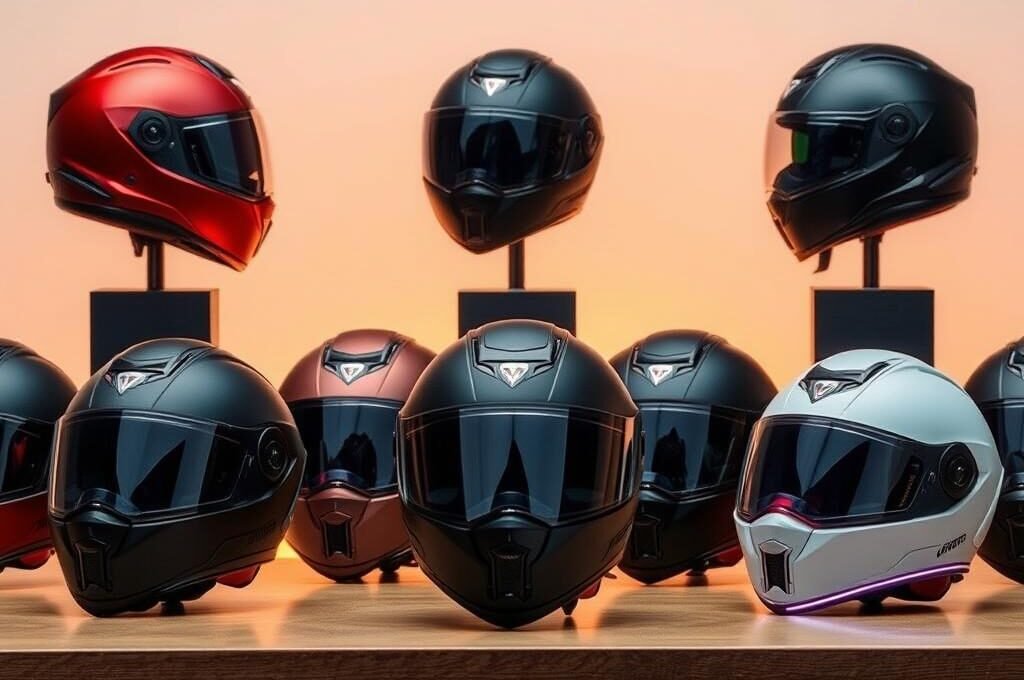
Sena Stryker — Hands-on
Best Overall (Moto)
Sena’s Stryker is the top smart full-face helmet for friends who use Mesh and Bluetooth. It comes with Mesh 2.0 + Bluetooth intercom, Harman Kardon speakers/mic, and a magnetic pogo charging port. This makes charging easy with gloves on.
The battery lasts about 10–11 hours on Mesh and up to 18 hours on Bluetooth. Many riders agree with this. The helmet is 1,750 g (M) and has a drop-down sun visor and a rear LED tail-light.
Noise control is good for a smart helmet. The app makes setting up groups easy. But, it only has DOT certification in the US. Speaker placement can affect sound with earplugs.
For riders in the US/UK/DE, Stryker is the best choice. It has all the features you need at a good price.
- Pros: All-in-one package, easy Mesh/BT, LED visibility.
- Cons: Not the quietest at high speed; region spec varies.
Sena Impulse — Hands-on
Best Modular (Moto)
Do you like flip-ups with smart tech? The Impulse has the same tech as the Stryker in a modular shell. It’s great for touring, commuting, and stopping for fuel.
The helmet weighs about 1,760 g (M). Battery life is similar to the Stryker—~10–11 h Mesh, ~18 h Bluetooth. You also get auto Wi-Fi firmware update while charging.
Sound quality is top-notch for calls and directions. The controls are easy to use with gloves. But, you might hear more wind noise than in a full-face helmet.
- Pros: Flip-up practicality, strong audio, easy updates.
- Cons: More wind noise than a full-face; weight adds up.
Availability can vary by region. If you want a flip-up with long-range comms, the Impulse is perfect for US/UK/EU riders.
Shoei GT-Air 3 + SRL3 — Hands-on
Quietest for Highway
Shoei’s GT-Air 3 is a top touring helmet. It’s pre-shaped for Sena’s SRL3 drop-in system. The helmet is DOT in the US and ECE 22.06 in the EU/UK.
It weighs about 3.9 lb and has great ventilation and finish. The SRL3 Mesh + Bluetooth unit fits inside, keeping the helmet quiet and aerodynamic. This is perfect for long motorway rides.
It offers premium comfort and clear comms. Battery life is similar to other Mesh units. Note that it only works with Sena systems without a bridge. It’s the best for quiet highway touring.
- Pros: Quiet aero, flush integration, premium comfort.
- Cons: Pricey; less flexible across ecosystems than universal kits.
AGV Tourmodular + INSYDE (Cardo DMC) — Hands-on
The Tourmodular helmet is great for long rides. It has a ECE 22.06 shell and is comfy.
It weighs about 1.7 kg.
What makes it special is the AGV INSYDE comms. It uses Cardo and DMC Mesh. This lets up to 15 riders talk clearly.
DMC Mesh reconnects automatically. It’s perfect for groups that ride far apart. The helmet is modular, so it’s a bit noisy. But, it’s great for group rides.
- Pros: DMC Mesh baked in, comfy modular, ECE 22.06.
- Cons: A bit louder than top full-faces; regional availability.
HJC RPHA 71 + SMART HJC 50B — Hands-on
- Pros: Light shell, clean integration, Mesh + BT value.
- Cons: Not class-leading for noise; Mesh reduces runtime.
Ruroc ATLAS 4.0 + Shockwave — Hands-on
Ruroc’s ATLAS 4.0 leans hard into style and modularity…
Ruroc’s ATLAS 4.0 is all about style and being easy to change up. The Shockwave audio keeps it looking good. You don’t need tools to put it on, and it’s easy to use with gloves.
The sound is strong enough for city rides. The design is sporty, not quiet like tourers. It fits well, but you might need to swap liners.
It’s certified and has different weights depending on where you are. The build and paint are top-notch. If you like a sleek look and easy Bluetooth, this is a great choice.
Best for: riders who love design and easy audio.
Pros: sleek shell, clean audio add-on, quick setup.
Cons: not the quietest at high speed; spec varies by region.
Best Smart Ski Helmets — Reviews
Choosing a ski helmet with audio and cold-weather performance changes your ride. Below, we review fit, communication, battery life, and mic clarity for downhill use. These helmets are great for the slopes and for commuters who want features for both.
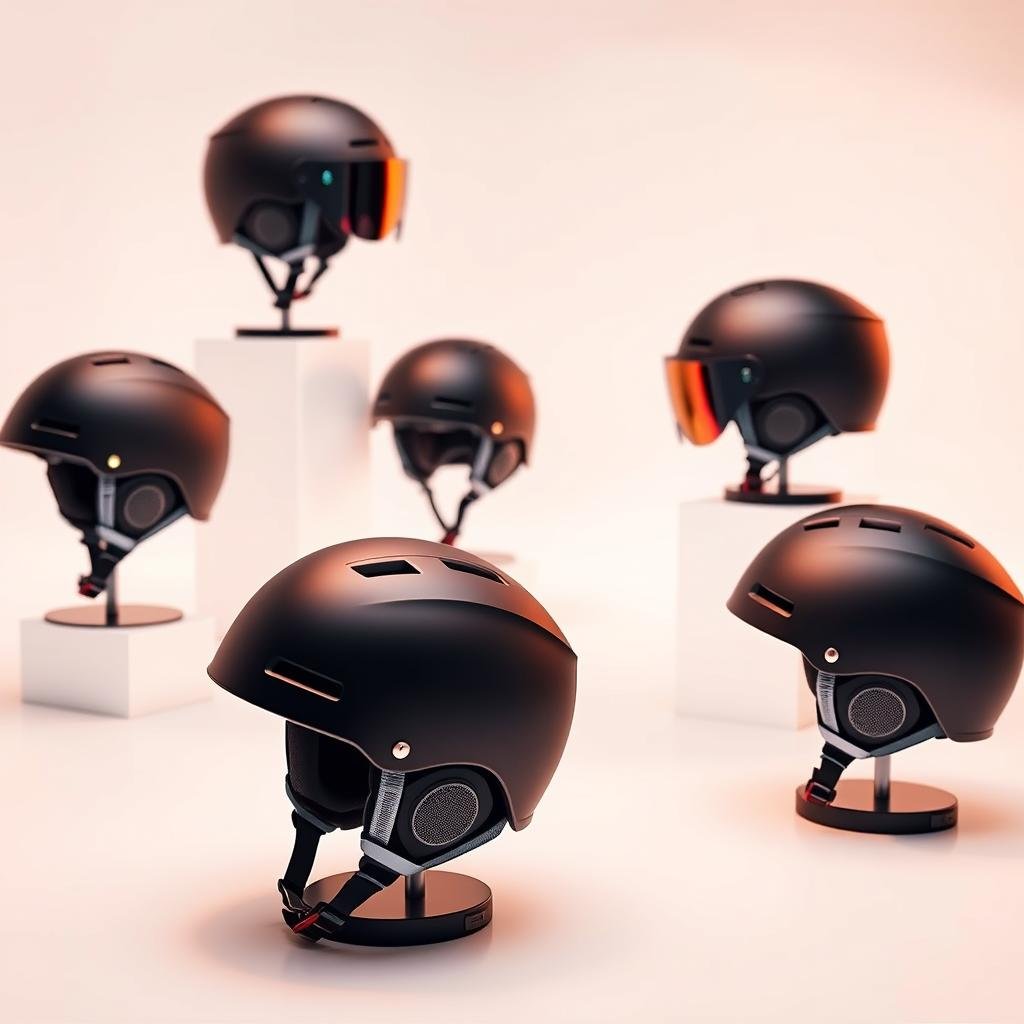
POC Obex MIPS Communication — On-snow
Best Overall (Ski)
POC’s Obex MIPS Communication helmet has POC Aid built-in. It has integrated Bluetooth speakers and mic. It’s easy to adjust and has vents.
It weighs about 1 lb 5 oz (M/L). It’s certified for skiing. The controls are easy to use with gloves.
It’s a simple choice for skiing in the US/UK/EU. You can add the POC Aid/Connect kit later if you want.
- Pros: True plug-and-play audio, MIPS, comfy dial fit.
- Cons: Heavier than the Pure; battery varies with temperature.
LIVALL RS1 — On-snow
Best Cold-Weather Battery (Ski)
The LIVALL RS1 helmet is great for cold days. It works well in -20 °C. It has up to 16 hours of battery life.
It’s a Bluetooth system with speakers and a mic. It’s light and has vents. It’s also good for goggles.
The audio is clear at moderate volume. Keep the volume low for safety. It’s a good choice for cold weather.
- Pros: Strong cold-weather battery, simple integration.
- Cons: Audio fidelity is serviceable; styling is utilitarian.
POC Obex Pure — Hands-on
(communication-compatible, Ski)
The Obex Pure is POC’s lightweight all-mountain shell…
The Obex Pure is POC’s light shell for all mountains. It’s affordable and easy to upgrade. It has a good fit system and vents well.
It’s certified and works with POC’s Aid Communication Headset. You can add speakers or a mic later. It also fits well with POC goggles.
It’s comfy for long days, but it doesn’t have fancy features. For those, get the Obex Communication/MIPS. The Pure is a good value for those who want to add audio later.
Best for: budget-minded skiers who want to upgrade later.
Pros: light, comm-ready, great goggle interface.
Cons: no MIPS/built-in audio; basic feature set.
Why smart audio and integrated Bluetooth matter for riders & skiers
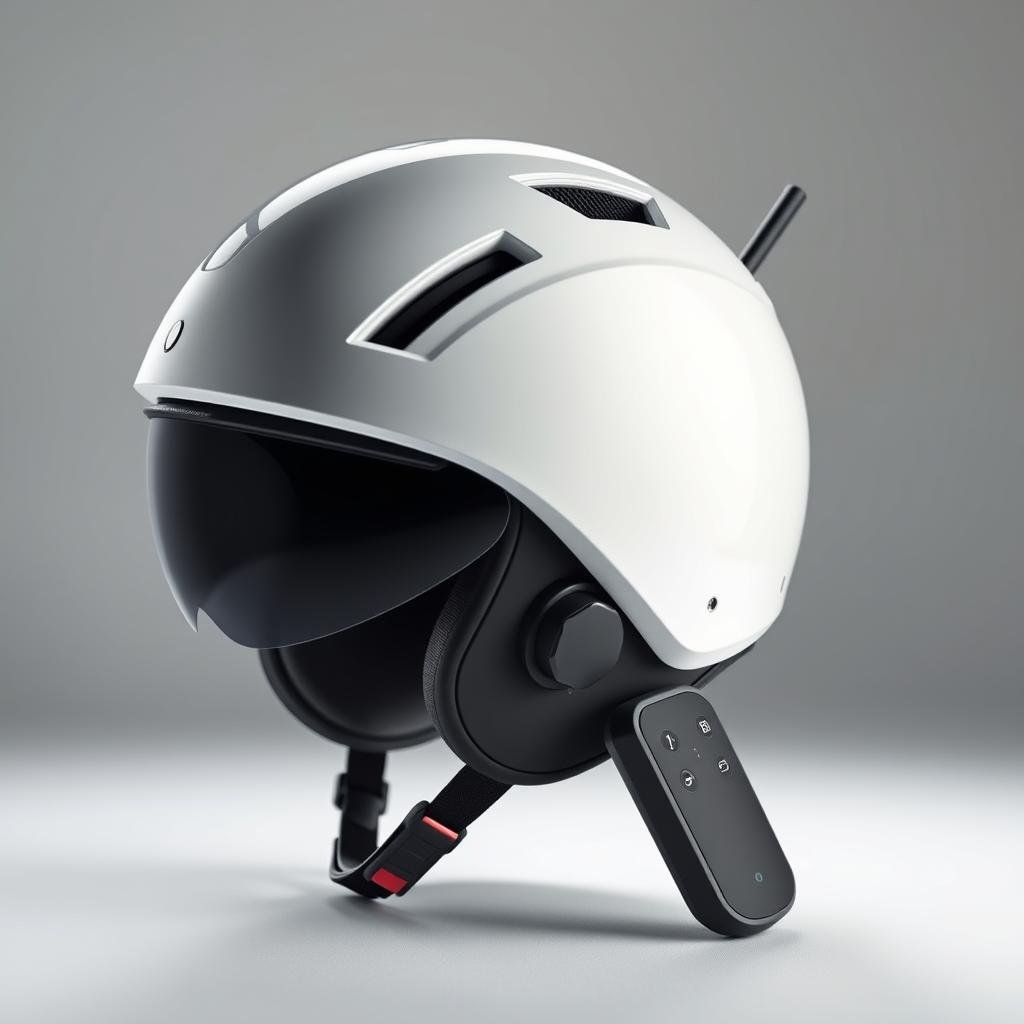
Smart audio in helmets changes how you ride and ski. You get turn-by-turn navigation, hands-free calling, and instant group talk without fumbling for your phone. Built-in systems cut clutter and keep your focus on the road or slope.
Safety benefits: navigation prompts, hands-free SOS, crash detection
GPS directions through a bluetooth helmet intercom let you follow routes without taking your eyes off the trail. When an impact occurs, crash detection can trigger an SOS and notify contacts.
Hands-free voice prompts reduce cognitive load in busy traffic. That lowers risk during lane changes and complex intersections.
Group communication: Mesh intercom vs Bluetooth intercom for riding groups
Mesh intercom systems handle larger groups and wider ranges than traditional point-to-point Bluetooth intercom setups. Mesh auto-heals and re-links riders after gaps in coverage.
Bluetooth intercom works well for pairs and small groups on short runs. For long tours and clubs, mesh intercom brings more resilience and simpler group management.
Entertainment and convenience: music, calls, voice assistants
Integrated helmet speakers deliver clearer sound than many aftermarket kits. You can stream music, take calls, and use voice assistants for navigation and messages.
Factory integration often yields better battery life and audio tuning. Brands like Sena and Cardo tune hardware with speakers and microphones for helmet acoustics.
Cold-weather and ski-specific advantages: integrated speakers, helmet speakers, cold-weather battery life
Bluetooth ski helmets must account for thick liners and wind noise. Dedicated speaker pockets and tuned helmet speakers preserve clarity on slopes.
Battery performance drops in cold. Some helmets and eBike models use cold-weather optimized batteries and external remote controls to extend usable time.
Smart helmet with Bluetooth/speakers
A smart helmet is more than just protection. It has speakers, a microphone, a battery, and controls inside. This makes it a device for calls, navigation, and group talks while you’re on the move.
Core components
The speakers fit in special pockets or liners. This makes it easy to replace them. The microphone is usually hidden to cut down on wind noise. Antennae are inside to keep things aerodynamic.
The battery powers your helmet’s features. Controls on the left side let you manage volume and pairing easily.
Advanced communication
Mash intercom systems connect riders without a single point of failure. Brands like Sena and Cardo offer this. Wave-style protocols ensure low-latency audio for groups.
Many helmets can connect with other brands. But, there might be limits on how many can join or the range. Some helmets for eBikes even have lights for safety.
Smart features beyond audio
Some helmets have crash detection to alert your phone. LEDs act as lights for visibility. Firmware updates keep your helmet’s tech current through apps.
But, some systems are sealed in the helmet. This means you can’t upgrade them without a new helmet.
| Component | Function | Serviceability |
|---|---|---|
| Built-in speakers | Deliver music and intercom audio; positioned in speaker pockets | Often removable via liner access for replacement |
| Microphone | Captures voice for calls and intercom; wind-noise suppression | Integrated into chin area or boom; service varies by model |
| Antenna | Maintains Bluetooth and mesh radio links with teammates and phone | Usually internal; repair needs factory parts or authorized service |
| Battery | Powers audio, mesh, lights, and smart sensors | Removable in some helmets; sealed in others with limited serviceability |
| Control interface | Buttons or jog-dials for pairing, volume, and intercom management | External housings replaceable on many helmets; integrated controls vary |
| Smart extras | Crash detection, OTA updates, LED lighting, app-based EQ | Firmware updates via apps; hardware upgrades may require new helmet |
https://www.youtube.com/watch?v=q-FX–y-NoI
How We Tested & Chose
Our testing protocol gives you clear context about each pick. You will read results built on long-term hands-on work, repeatable test conditions, and objective scoring. This section explains the process behind our evaluations so you can judge how the picks apply to your riding or skiing needs.
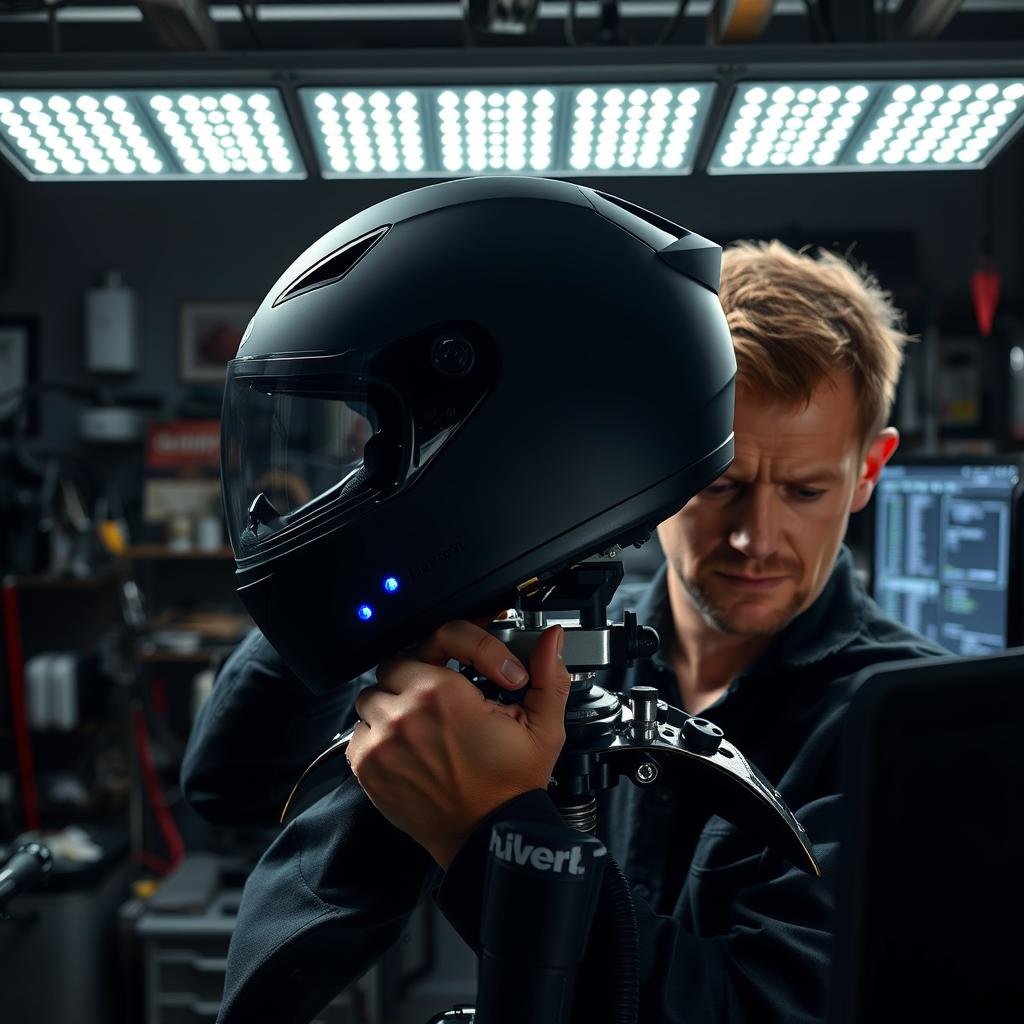 Hands-on testing experience
Hands-on testing experience
We have worn and tested more than 2,500 items for over 20 years. Over 450 helmet reviews form the backbone of our dataset. That history lets us spot trends in audio quality, fit, and safety across new releases and legacy models.
Real-world riding and skiing scenarios
Tests covered highway speeds for wind and noise, long touring runs for comfort and battery endurance, group rides for intercom performance, and cold-weather slope runs for ski-helmet reliability. Brands like Shoei, Schuberth, Sena, Cardo, and POC appear across tests to represent common rider experiences.
Objective scoring
Each helmet earned scores for safety and performance, functions and features, plus price and value. We graded safety certifications, comfort and fit, audio clarity, intercom range, battery life, software quality, and parts availability. That system helps compare top rated bluetooth motorcycle helmets and top rated smart helmets on consistent grounds.
Long-term evaluation
Beyond first impressions, we tracked battery degradation, firmware update cadence, and replacement part access. Long-term checks included repeated charge cycles, OTA update reliability through vendor apps, and wear tests on liners, speakers, and mic assemblies.
Our approach blends lab-style measures with in-field feedback. The result is a practical, repeatable method that supports trustworthy recommendations for riders seeking top rated smart helmets and for readers who want robust bluetooth integrated helmet testing data.
Buying Guide — What Actually Matters
Choosing the right helmet is about safety, sound, battery life, and comfort. You need features that fit your riding or skiing style. This guide helps you compare models like Shoei, Schuberth, Sena, Cardo, POC, and LIVALL with confidence.
Safety and certification
In the United States, look for DOT-certified shells. For Europe, ECE 22.06 is key. Snell is best for track use. High-speed eBikes need NTA-8776 for legal and insurance reasons.
Audio and intercom
Bluetooth 5.x is great for phone calls and streaming. For group talk, choose helmets with Mesh 2.0 or 3.0. Features like group size and range are important too.
Battery and charging
Check talk times and real-world performance. Sena helmets offer about 18 hours on Bluetooth and 11 hours with mesh. Cold-weather battery ratings are important for winter rides. Magnetic chargers are convenient for charging at night.
Noise control and comfort
Look for helmets with aerodynamic shapes and multi-density EPS liners. Brands like Shoei and Schuberth have features for quieter rides. Ventilation, liner fabrics, and cheek-pad fit are key for comfort.
Quick comparison
| Priority | What to look for | Why it matters |
|---|---|---|
| Certification | DOT, ECE 22.06, Snell, NTA-8776 | Legal use, insurance, parts compatibility |
| Intercom | Bluetooth 5.x, Mesh 2.0/3.0, DMC | Group size, range, call stability |
| Battery | Talk time, cold-weather battery rating, magnetic charger | All-day use, winter reliability, connector longevity |
| Audio fit | Deep speaker pockets, speaker quality, app EQ | Clarity at speed, hands-free navigation, music enjoyment |
| Noise & comfort | Aero shell, multi-density EPS, ventilation | Reduced fatigue, usable at highway speeds and on slopes |
| Ski-specific | smart ski helmets with speakers, mic placement, cold-weather battery | Clear comms on slopes, reliable power in low temps |
| Group tech | mesh intercom support, universal pairing modes | Better coordination in riding groups and ski patrols |
Final checklist before you buy
- Confirm the certification you need for your region and use.
- Test pairing with your phone and a buddy’s unit when possible.
- Ask for verified cold-weather battery claims if you ride in winter.
- Try the helmet on with jacket and goggles to check noise and fit.
Safety Standards and Certification Across Markets
Before buying a smart helmet, you need to know about certifications. These standards affect many things like legality, parts, and warranties. They also decide which helmets with Bluetooth will work in your area.
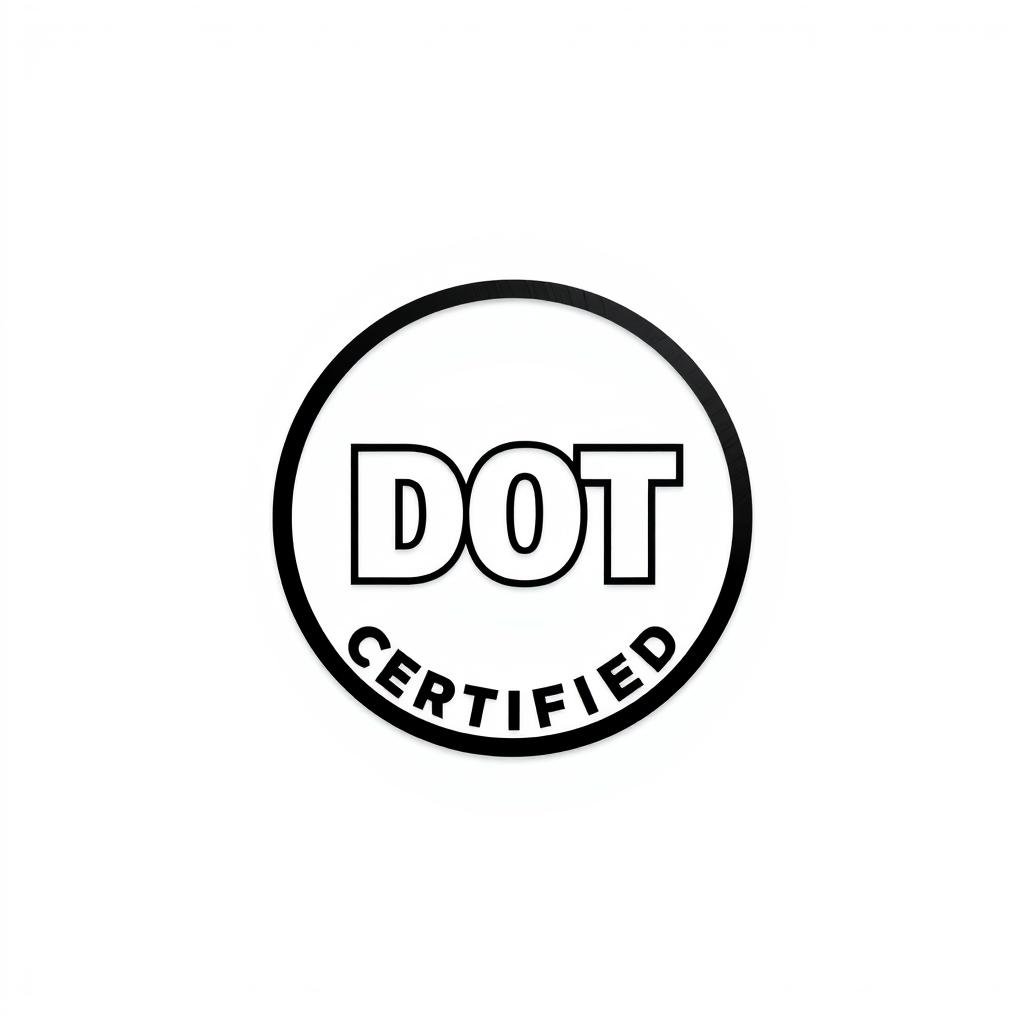
US standards: DOT and implications for integrated Bluetooth helmets
In the U.S., the main standard is DOT certification. Without DOT, a helmet might be illegal and could not cover crash claims. Many helmets with Bluetooth have DOT or DOT plus other marks.
Check the label and the manufacturer’s paperwork before buying. DOT helmets usually allow approved parts. This is important for repairs or replacing parts after a crash.
European standards: ECE 22.06 and compatibility with mesh/BT systems
In Europe, ECE 22.06 is the standard. It uses newer tests. Brands like Schuberth, Shoei, and AGV are switching to ECE 22.06 for better acceptance.
ECE doesn’t cover electronics, but it checks the shell and retention system. This makes it easier to add mesh or Bluetooth systems without losing homologation.
Specialized standards: NTA-8776 for speed eBikes and ski-specific tests
NTA-8776 is for speed-pedelecs and Class 3 eBikes. It has higher energy tests than basic bike standards. For fast eBikes, choose helmets with NTA-8776 for legal and safe riding.
Ski helmets need EN 1077 or ASTM standards. For skiing, look for ski-specific tests and features like MIPS. These marks show the helmet is tested for winter and cold.
What certification means for replacement parts and warranty
Certifications affect spare parts and warranties. Manufacturers need certified parts to keep the helmet legal. Aftermarket parts can void warranties and make the helmet illegal.
When looking at Bluetooth helmets, check if the comms module is removable. This ensures your warranty and keeps the helmet legal.
Setup Tips & Audio Tuning
Start with a quick checklist for clear sound and reliable comms. Power on devices, update firmware, and keep spare chargers handy. A calm, step-by-step approach saves time on the trail or road.
Initial pairing and universal pairing with other brands
For initial pairing, follow the headset prompt and open the manufacturer’s app. Use universal pairing mode for different brands. Expect fewer features, like smaller group sizes or lost advanced mesh functions.
Fine-tuning audio for clearer sound
Place speakers in pre-formed pockets that match helmet contours. Small adjustments can change sound quality. Test with a short ride before long trips.
Adjust EQ via apps to boost voice or cut wind hiss. Create volume presets for different riding conditions. Keep one preset lower for skiing to stay alert.
Mesh network tips for group communication
Choose Mesh 2.0 or 3.0 for larger groups or longer range. Use mesh tips like limiting channels in crowded events. Allow the system to auto-heal; riders usually rejoin without manual re-pairing.
Set one leader device as the channel anchor when possible. If someone can’t rejoin, have them toggle Bluetooth or move closer to another mesh node.
Cold-weather setup to protect battery life
Warm batteries indoors before a ride to prevent voltage drop. Store batteries and helmets at moderate temperature overnight. Maintain a storage state-of-charge between 40–80% for long gaps in use.
Use magnetic chargers to reduce connector wear and for easier handling with gloves. Carry a small insulated pouch to keep backup batteries warmer on long winter runs.
Quick checklist
- Update firmware in manufacturer app and confirm pairing settings.
- Position speakers, test EQ via apps, save volume presets.
- Use Mesh 2.0/3.0 when available; limit channels in busy areas.
- Warm batteries before use; store at 40–80% for long-term care.
Care, Maintenance & Battery Health
Keeping your smart helmet in top shape is key for safety and sound quality. Simple steps protect the helmet’s shell, lining, and electronics. This ensures your rides are clear and dependable.
Routine care
Take out the liners and wash them as the maker says. Clean the shell with mild soap and gently wipe the connectors. Check the speaker pockets and microphone ports for moisture or wear after wet rides.
Battery longevity
Keep lithium packs healthy by avoiding deep discharges. Store at 40–60 percent charge for long storage. Cold weather cuts down battery life, so charge before cold rides and store in a warm spot.
Replacing consumables
Look for brands like Sena, Shoei, Schuberth, and POC for parts. Most offer replaceable speakers, microphones, cheek pads, and liners. Choose helmets with easy service access to cut down on downtime.
Software and firmware
Regularly open your manufacturer app for OTA updates. These updates fix bugs and add new features. Register your helmet to get safety recall notices and ensure your app is current for reliable pairing and security.
| Item | Maintenance Action | Frequency | Notes |
|---|---|---|---|
| Inner liner | Remove and wash by hand or machine per manual | Monthly or after heavy use | Air dry completely before reinstalling |
| Speakers & mic | Inspect for corrosion, reseat connectors | Every 2–3 months or after exposure to moisture | Replaceable speakers simplify repairs |
| Battery | Charge to 40–60% for storage; avoid full discharge | Check state monthly during storage | Cold weather reduces capacity; warm before use |
| Shell | Clean with mild soap; inspect for damage | After each ride that exposes helmet to grit or chemicals | Avoid solvents and submersion |
| Software | Check app for OTA updates and install firmware patches | Monthly or on release | Keep apps like Sena Motorcycles or Cardo Connect current |
Alternatives: Add-On Bluetooth Systems and When to Choose Them
Choosing between a built-in headset and add-on systems is about flexibility versus integration. You can upgrade an old helmet with modern comms or move a single unit across helmets. This freedom keeps your favorite helmet while adding features like intercom, music, and phone calls.
Pros
- You save money up front by fitting a Cardo or Sena standalone units package to an existing helmet.
- You gain cross-helmet flexibility; one unit can serve multiple helmets during seasonal swaps.
- You can choose specific features, such as a higher-end bluetooth helmet intercom, without buying a new shell.
Cons
- Add-ons add visible bulk and may require routing wires or mounting brackets that affect fit.
- Battery life tends to be shorter than premium integrated systems, specially under heavy use.
- Installation can be fiddly if your helmet lacks speaker pockets, and hidden-mic options may be limited.
When an add-on makes sense, you want to preserve a beloved helmet or test comms before committing to a premium integrated model. If you plan to switch helmets, travel with one unit, or shop on a modest budget vs premium split, an add-on gives low-risk upgradeability. You keep options and avoid replacing the shell for a single missing feature.
Compatibility and installation vary by helmet and model. Check for speaker pockets or plan for adhesive speakers. Boom mics work well on modular shells, while wired or hidden mics suit full-face helmets. Many riders handle DIY installs with manufacturer kits, but a professional install improves mic placement and keeps vents clear.
Budget vs premium trade-offs matter when you compare longevity and features. Premium integrated helmets like those with factory mesh or advanced OEM audio offer cleaner looks, longer battery life, and robust mesh capabilities. Add-on units from Cardo or Sena standalone units deliver strong universal pairing and value, but you may sacrifice subtle fit and the extended range of high-end Mesh systems.
If you want transferability, lower upfront cost, or targeted feature upgrades, add-on bluetooth systems remain a practical path. If you prioritize slim aesthetics, top battery life, and advanced mesh comms, plan for a premium integrated solution instead.
Conclusion
Your best smart helmet for skiing and motorcycling starts with fit and certification. A helmet that meets DOT, ECE 22.06, or NTA-8776 standards is key. It should also fit your head well.
After ensuring safety and fit, look at bluetooth helmets. Check their comms, battery life, and how they perform in cold weather.
Consider how you ride or ski. If you commute or ride fast eBikes, look for helmets like Unit 1 Aura or Lumos Ultra. They have integrated lights.
For group rides and long tours, Sena models like Stryker and Impulse are great. They offer mesh intercom. Brands like Shoei, POC, Schuberth, AGV, LIVALL, HJC, and Cardo also have top smart helmets.
Use the buying guide and setup tips in this article to find the right helmet. If you need long talk times and music, focus on battery and audio quality. For skiing, look for cold-weather battery life and clear sound under goggles.
In the end, choose a helmet that fits, has the right certification, and meets your needs. This will help you find the best smart helmets for 2025.
Check also our best-wireless-gaming-headphones


